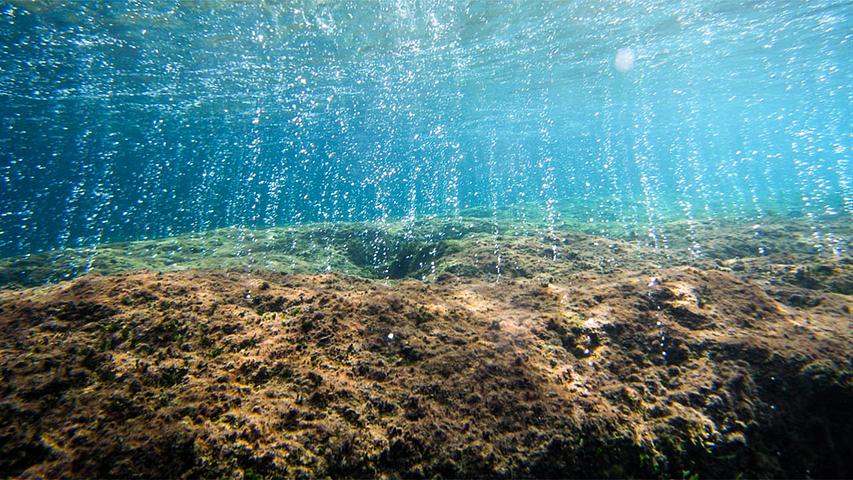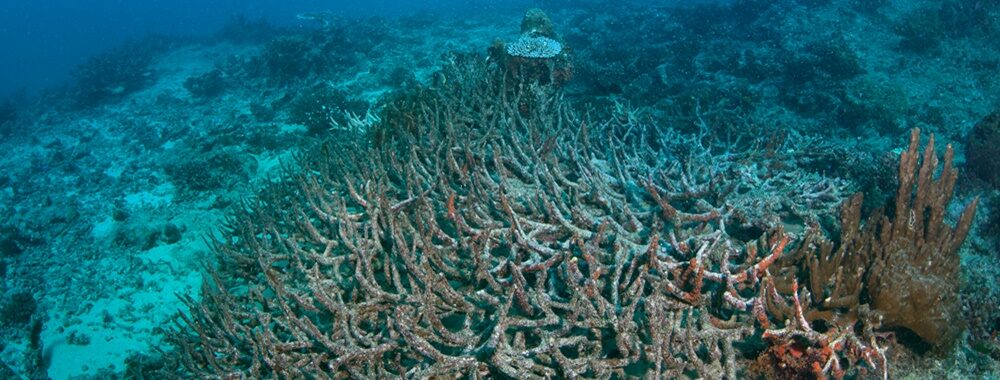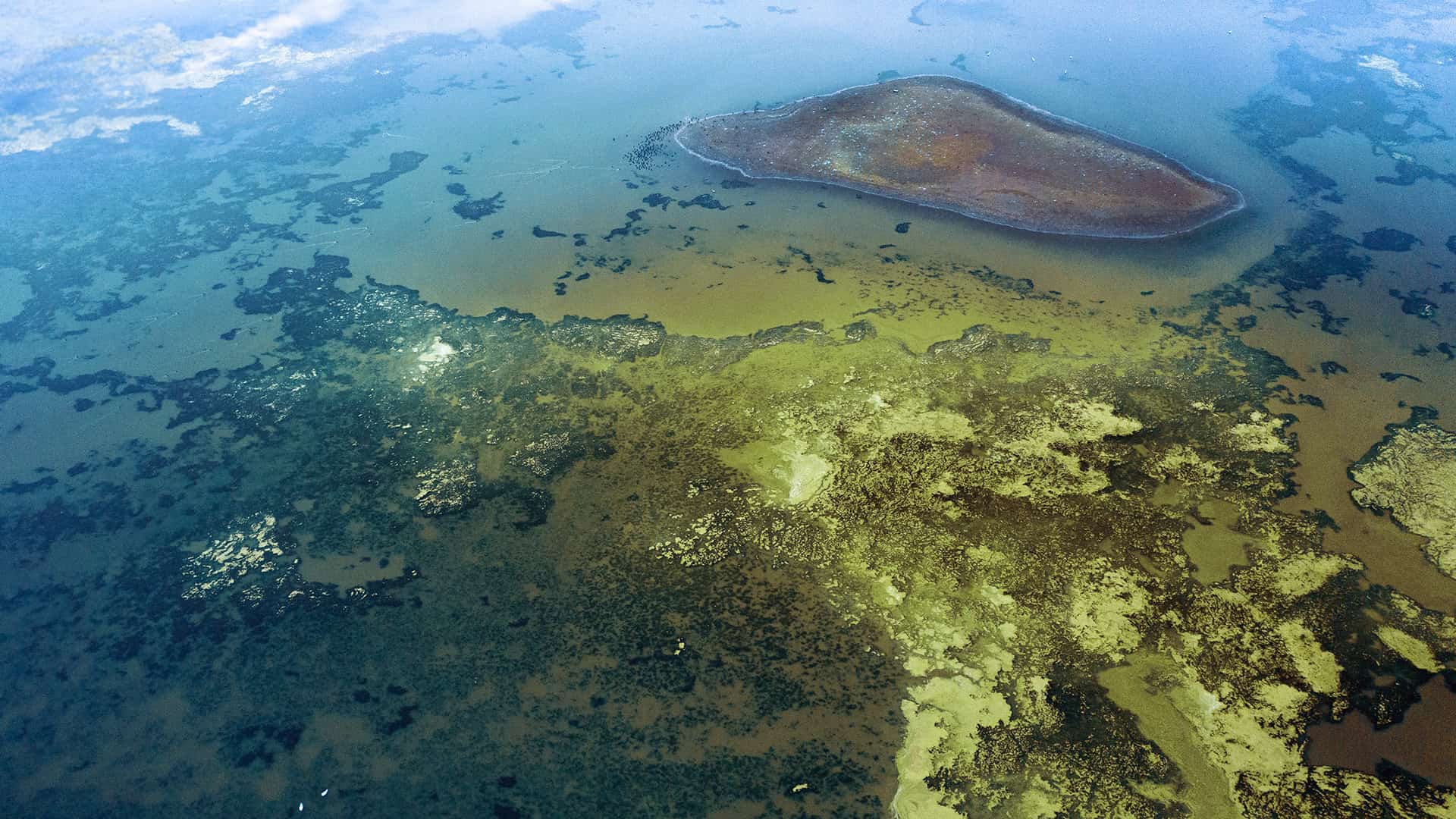Ocean Acidification: A Silent Threat to Marine Ecosystems
Ocean acidification is a critical yet often overlooked consequence of increased atmospheric carbon dioxide (CO₂) levels. As CO₂ emissions continue to rise, a significant portion of this gas is absorbed by the world’s oceans, leading to chemical changes that threaten marine life and ecosystems. This article explores the causes, effects, and potential solutions to ocean acidification.

What is Ocean Acidification?
Ocean acidification refers to the decrease in pH levels of the Earth’s oceans, making them more acidic. This process occurs when CO₂ from the atmosphere dissolves in seawater, forming carbonic acid. This acid dissociates into hydrogen ions and bicarbonate, increasing the acidity of the water.
Causes of Ocean Acidification
1. Increased CO₂ Emissions:
- Human activities such as burning fossil fuels, deforestation, and industrial processes have significantly increased atmospheric CO₂ levels since the Industrial Revolution. The oceans absorb about 30% of this CO₂, leading to acidification.
2. Chemical Reactions in Seawater:
- When CO₂ dissolves in seawater, it forms carbonic acid (H₂CO₃), which then breaks down into hydrogen ions (H⁺) and bicarbonate ions (HCO₃⁻). The increase in hydrogen ions leads to lower pH levels, indicating higher acidity.
Effects of Ocean Acidification
1. Impact on Marine Life:
- Calcifying Organisms: Species such as corals, mollusks, and some plankton rely on calcium carbonate (CaCO₃) to form their shells and skeletons. Increased acidity reduces the availability of carbonate ions (CO₃²⁻), making it harder for these organisms to build and maintain their structures. This can lead to weaker shells and skeletons, increased mortality rates, and reduced reproductive success.
- Coral Reefs: Coral reefs are particularly vulnerable to acidification. As the building blocks of coral skeletons become scarcer, coral growth slows, and existing structures weaken. This affects the entire reef ecosystem, which relies on healthy corals for habitat and protection.
- Marine Food Webs: Changes in the abundance and health of plankton, which form the base of marine food webs, can ripple through the ecosystem, affecting fish, marine mammals, and birds that depend on these organisms for food.
2. Economic Impact:
- Fisheries and Aquaculture: Many commercially important fish and shellfish species are affected by acidification. Declines in these populations can impact global fishery yields, threatening food security and livelihoods for millions of people who depend on marine resources.
- Tourism: Coral reefs attract tourists for snorkeling, diving, and other recreational activities. Degradation of these reefs can reduce tourism revenue for coastal communities.
3. Ecosystem Services:
- Biodiversity: Ocean acidification threatens marine biodiversity, leading to the loss of species and the ecosystems they support. This loss diminishes the ocean’s ability to provide services such as coastal protection, nutrient cycling, and carbon storage.
- Coastal Protection: Coral reefs and other marine habitats act as natural barriers against storm surges and erosion. As these structures weaken, coastal areas become more vulnerable to damage from extreme weather events.
Mitigation and Adaptation Strategies

1. Reducing CO₂ Emissions:
- The most effective way to combat ocean acidification is to reduce CO₂ emissions. This involves transitioning to renewable energy sources, improving energy efficiency, and implementing carbon capture and storage (CCS) technologies.
2. Protecting and Restoring Marine Ecosystems:
- Marine Protected Areas (MPAs): Establishing MPAs yowestogel can help safeguard vulnerable marine species and habitats from additional stressors such as overfishing and pollution.
- Restoration Projects: Initiatives to restore damaged coral reefs and seagrass beds can enhance the resilience of these ecosystems to acidification.
3. Research and Monitoring:
- Monitoring Programs: Expanding monitoring efforts to track changes in ocean chemistry and the health of marine organisms can help scientists understand the impacts of acidification and develop effective response strategies.
- Research: Continued research is needed to better understand the mechanisms of acidification, its effects on different species, and potential adaptation strategies.
4. Policy and Advocacy:
- International Agreements: Strengthening international agreements, such as the Paris Agreement, can foster global cooperation to reduce CO₂ emissions and address climate change.
- Public Awareness: Raising awareness about ocean acidification and its impacts can drive public support for policies and actions aimed at reducing emissions and protecting marine environments.
Ocean acidification is a pressing environmental issue with far-reaching consequences for marine ecosystems, economies, and human communities. By understanding its causes and effects, and by taking decisive action to reduce CO₂ emissions and protect marine life, we can mitigate the impacts of this silent threat. Collaborative efforts at local, national, and global levels are essential to ensure the health and resilience of our oceans for future generations.
Advantages and Disadvantages of Ocean Acidification
Ocean acidification, a process caused by the increased absorption of carbon dioxide (CO₂) by the world’s oceans, has far-reaching impacts on marine ecosystems and human communities. While the term is generally associated with negative consequences, it is important to comprehensively understand both the potential advantages and disadvantages. This article explores these aspects in detail.

Advantages of Ocean Acidification
1. Increased Photosynthesis for Some Marine Plants and Algae:
- Enhanced Growth: Certain species of marine plants and algae, particularly those that utilize CO₂ for photosynthesis, may benefit from higher levels of dissolved CO₂. These organisms can experience enhanced growth rates, which can boost primary productivity in some marine environments.
2. Potential Short-Term Increase in Certain Fisheries:
- Temporary Boost in Fish Populations: In some cases, increased primary productivity due to higher CO₂ levels can lead to a short-term increase in food availability for certain fish species. This could potentially enhance fish populations temporarily, benefiting fisheries in the short run.
Disadvantages of Ocean Acidification
1. Negative Impact on Calcifying Organisms:
- Weakened Shells and Skeletons: Organisms such as corals, mollusks, and some plankton rely on calcium carbonate to form their shells and skeletons. Ocean acidification reduces the availability of carbonate ions, making it more difficult for these organisms to build and maintain their structures. This can lead to weaker shells, increased mortality rates, and decreased reproductive success.
- Coral Reef Degradation: Coral reefs are particularly vulnerable to acidification. The weakening of coral skeletons affects the entire reef ecosystem, which relies on healthy corals for habitat and protection. This can lead to a decline in biodiversity and the loss of ecosystem services provided by reefs.
2. Disruption of Marine Food Webs:
- Plankton Decline: Plankton, the base of many marine food webs, can be adversely affected by acidification. Changes in the abundance and health of plankton can ripple through the ecosystem, impacting fish, marine mammals, and birds that depend on these organisms for food.
- Economic Impact on Fisheries: Many commercially important fish and shellfish species are affected by acidification. Declines in these populations can impact global fishery yields, threatening food security and livelihoods for millions of people who depend on marine resources.
3. Ocean Ecosystem Health:
- Loss of Biodiversity: Ocean acidification threatens marine biodiversity, leading to the potential extinction of vulnerable species. This loss of biodiversity can diminish the ocean’s ability to provide essential ecosystem services such as coastal protection, nutrient cycling, and carbon storage.
- Altered Behavior and Physiology: Many marine species exhibit changes in behavior and physiology in response to acidification. For example, some fish may experience impaired sensory functions, making it harder for them to avoid predators or locate prey.
4. Socio-Economic Consequences:
- Tourism Decline: Coral reefs attract tourists for snorkeling, diving, and other recreational activities. Degradation of these reefs can reduce tourism revenue for coastal communities.
- Increased Coastal Vulnerability: Coral reefs and other marine habitats act as natural barriers against storm surges and erosion. As these structures weaken, coastal areas become more vulnerable to damage from extreme weather events, impacting infrastructure and human settlements.
Conclusion
While ocean acidification has some potential benefits, such as enhanced growth for certain marine plants and temporary boosts in specific fish populations, the disadvantages far outweigh these advantages. The negative impacts on calcifying organisms, disruption of marine food webs, loss of biodiversity, and socio-economic consequences pose significant challenges to marine ecosystems and human communities. Addressing ocean acidification requires concerted efforts to reduce CO₂ emissions, protect vulnerable marine habitats, and promote sustainable practices. By taking action now, we can mitigate the adverse effects and safeguard the health of our oceans for future generations.
Read More Article About “Physical Health Problems: Addressing Common Challenges 2024“













